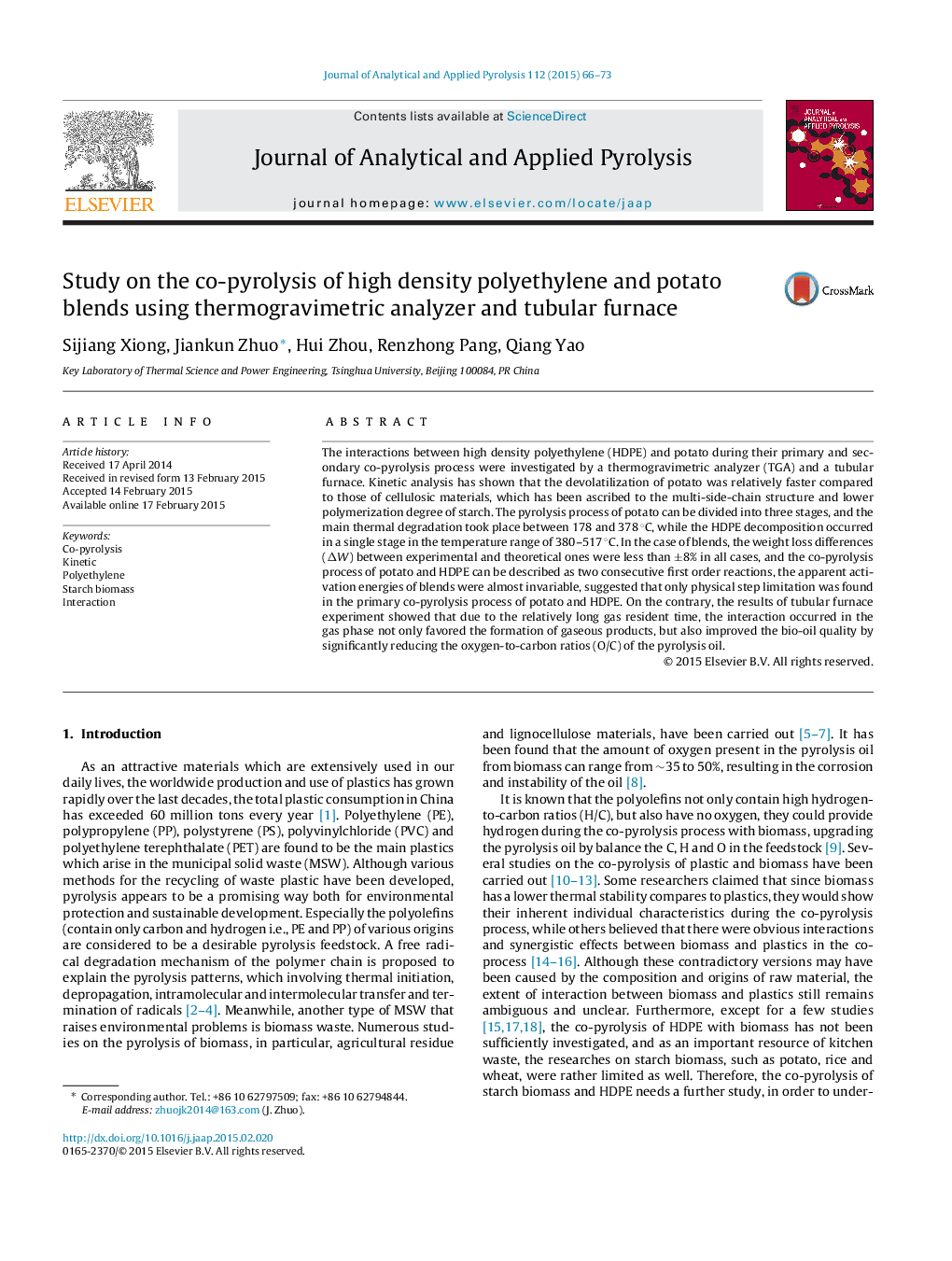| Article ID | Journal | Published Year | Pages | File Type |
|---|---|---|---|---|
| 1197218 | Journal of Analytical and Applied Pyrolysis | 2015 | 8 Pages |
•The devolatilization of potato is faster than that of cellulosic materials.•Only physical step limitation has occurred in the primary co-pyrolysis process.•The addition of potato favored the gas yields during the secondary co-pyrolysis.•The addition of HDPE improved the liquid yields in terms of quantity and quality.•The reduced oxygen of the pyrolysis oil converted to a large amount of CO and CO2.
The interactions between high density polyethylene (HDPE) and potato during their primary and secondary co-pyrolysis process were investigated by a thermogravimetric analyzer (TGA) and a tubular furnace. Kinetic analysis has shown that the devolatilization of potato was relatively faster compared to those of cellulosic materials, which has been ascribed to the multi-side-chain structure and lower polymerization degree of starch. The pyrolysis process of potato can be divided into three stages, and the main thermal degradation took place between 178 and 378 °C, while the HDPE decomposition occurred in a single stage in the temperature range of 380–517 °C. In the case of blends, the weight loss differences (ΔW) between experimental and theoretical ones were less than ±8% in all cases, and the co-pyrolysis process of potato and HDPE can be described as two consecutive first order reactions, the apparent activation energies of blends were almost invariable, suggested that only physical step limitation was found in the primary co-pyrolysis process of potato and HDPE. On the contrary, the results of tubular furnace experiment showed that due to the relatively long gas resident time, the interaction occurred in the gas phase not only favored the formation of gaseous products, but also improved the bio-oil quality by significantly reducing the oxygen-to-carbon ratios (O/C) of the pyrolysis oil.
